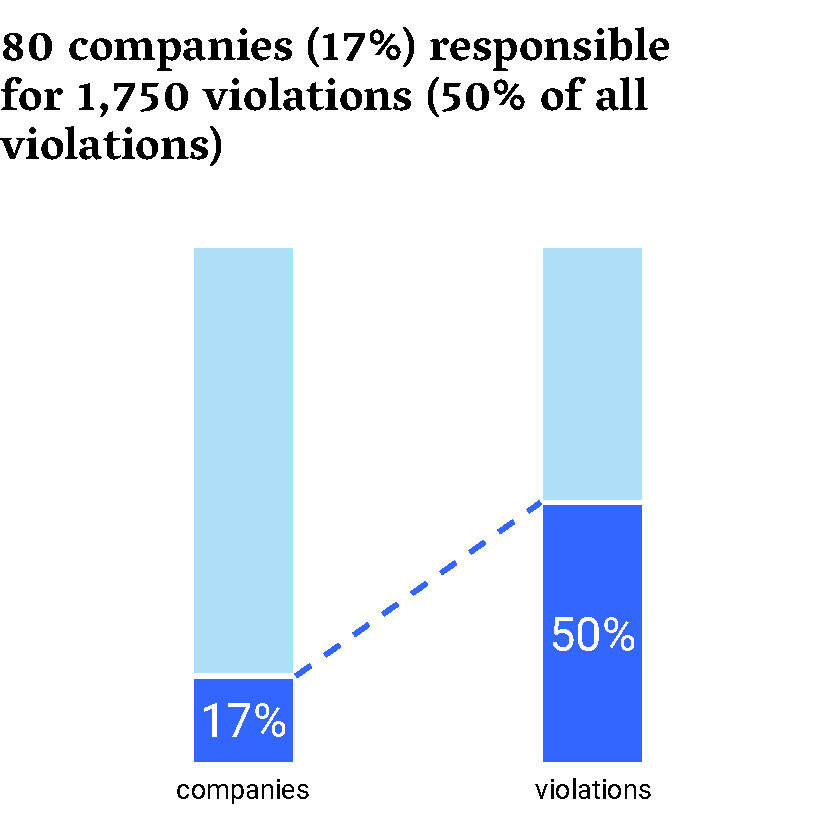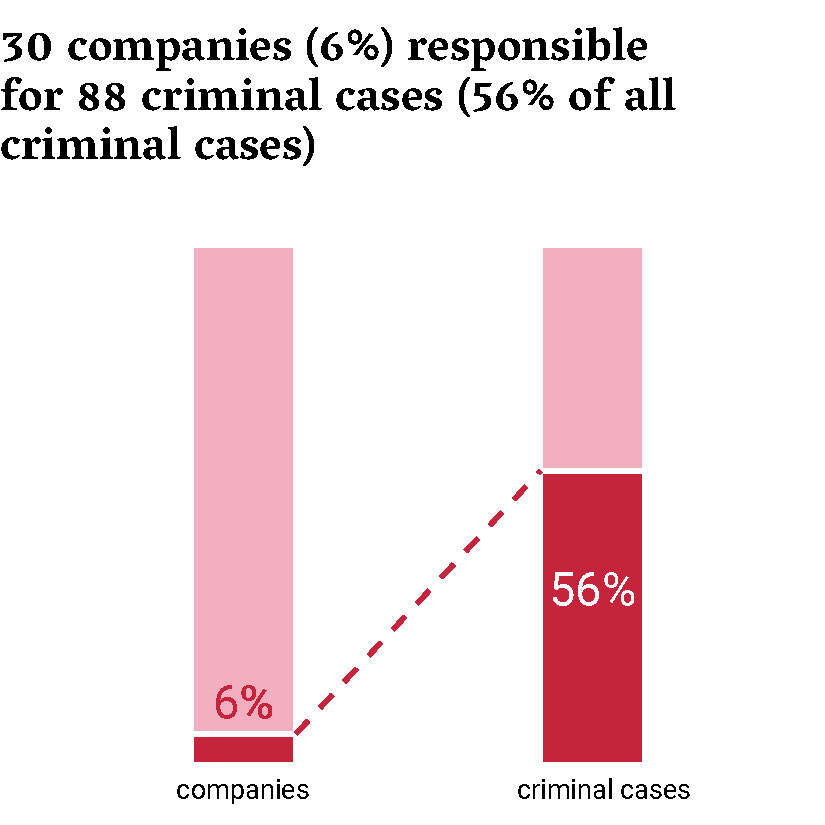Combatting environmental crime is fumbling in the dark
A small group of the 500 or so companies that work with large volumes of hazardous substances repeatedly violate environmental laws. The Netherlands Court of Audit has brought this group of repeat violators into focus for the first time. It required intense editing and analysis of the data on the 500 company sites inspected over a period of 5 years. The audit report, Enforcing in the Dark, reveals that the approach to environmental crime and violations is inadequate, even though nearly 20,000 environmental inspections were carried out in 5 those years.

The repeat violators were revealed by linking inspection data to the right company site, a task that the Court experienced as its greatest challenge. Nearly 3,500 of the 20,000 inspections found one or more violations. Half of the violations were committed by 80 companies (17% of the total) and 30 companies (6%) were involved in 56% of the criminal proceedings that were instigated.


Most companies commit few violations, some a great deal

The Court’s audit report provides an insight into compliance with environmental laws and the government’s response to violations. The companies audited were those subject to the Major Accidents (Risks) Decree for a large part of the period 2015-2019.
Stumbling block: lack of information
The main cause of the inadequate enforcement of environmental laws is the lack of good, reliable information on the outcomes of inspections at companies that work with large volumes of hazardous substances. In 1 out of 3 violations detected, for instance, it was not known how serious the violation was. Moreover, it was often not known what enforcement measures were taken. This was the case in half of the medium and serious cases. In the Court of Audit’s opinion owing to the lack of information, supervisors, enforcement organisations, the Minister of Justice and Security and the State Secretary for Infrastructure and Water Management were fumbling in the dark. They have no insight into the nature and size of environmental crime and violations, the companies that are repeat offenders, the effectiveness of sanctions, shortcomings in supervision and inconsistencies in enforcement. This makes it impossible to adapt policy appropriately.
Environmental costs running into billions
The problem, however, is of great importance. The Human Environment and Transport Inspectorate (ILT) has calculated the cost of environmental crime and violations in 2020 at €4.35 billion. This is as a result of soil, air, groundwater and surface water pollution with consequences for the environment, climate, flora and fauna, and human health.
Supervision inadequately risk-based
The audit found that the 20,000 inspections carried out over 5 years were not risk-based. On average, each company was inspected 8 times a year but in practice the number varied significantly. Most companies were rarely inspected, yet the risk of a violation at dozens of them was high. This reduces the effectiveness of the approach to environmental crime and violations.
First analysis of the effectiveness of the approach
The Court of Audit also analysed the effectiveness of the approach to environmental crime and violations for the first time and concluded that it was limited. Companies commit fewer violations mainly when a follow-up check is carried out or an official warning notice is issued. Fines seem to have little effect. Very few companies are closed down. No opinion can therefore be formed on the effectiveness of the approach.
Whether a company commits its first or its tenth violation has little effect on the severity of the sanction that is imposed. Moreover, the approach is not scaled up from administrative law to criminal law if a company commits many violations. Some companies commit many violations but are rarely involved in criminal proceedings. The Court accordingly classifies the interaction between administrative law and criminal law as ‘uncertain’.
Sanctions have little effect
Furthermore, most criminal cases end with the public prosecutor agreeing to a penalty payment or out-of-court settlement of less than €10,000. The amount concerned is often less than 1% of the company’s profit or turnover. Furthermore settlement is reached without guilt being established. The deterrent effect is therefore low and sanctions seldom improve compliance with environmental laws. Little consideration is given to retribution for environmental crimes. The Court of Audit therefore calls on the Minister of J&V, the public prosecutor and the judiciary to improve how they express the public disapproval of environmental crime.
Most fines are less than €10,000

Data problems
| The lack of information on the size of environmental crime and violations is due to the poor quality of the data kept by supervisors. In January 2021 the Court of Audit published a report entitled An Invisible Problem that can be considered a precursor of Fumbling in the Dark. The Van Aartsen Committee, which studied the permitting, supervision and enforcement system under which environmental legislation falls, also concluded in its report, About the Living Environment, that little quantitative information was available. The Court’s present report has changed this situation thanks to the thorough editing and analysis of the available registration data. |